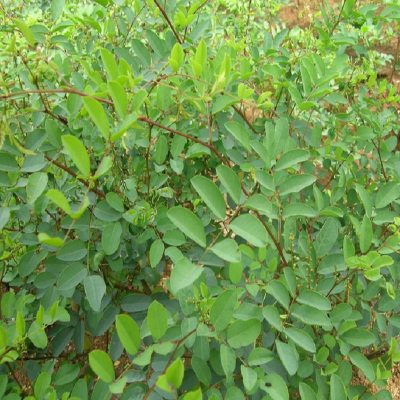Distribution and Habitat: This plant is distributed in South and South East Asia, tropical Africa and is introduced in tropical America. In India, it is found almost throughout and cultivated in many parts.
Botany: A branching shrub which grows up to 2 m high. Stems and branches are green; branchlets silvery pubescent.
- Leaves: Alternate, stipulate, imparipinnate and got 7-13 leaflets which are elliptic-oblong, membraneous,1.7 x 0.9 cm, shortly mucronate, pale green or bluish.
- Flowers: Small, rose-coloured in axillary racemes.
- Fruit: Pods are linear, cylindrical, pale greenish grey when young and dark brown on ripening, 2-5 cm long, deflexed having 8-12 seeds.
Properties:Antipyretic, anticephalgic
Chemical constituents:
- A blue dyestuff is obtained from the indigo plant which does not exist ready formed, but is produced during fermentation from another agent existing in the plant, known as indican.
- Indican is a yellow amorphous material with a nauseous bitter taste with an acid reaction, readily soluble in water, alcohol and ether.
- An artificial product indigotin is manufactured chemically and used as a substitute. Indirubin is another component of the plant.
Uses: Nili is a reputed drug produced from this plant, which is used in ayurveda for the promotion of hair growth and it forms a major ingredient of preparations like nilibhringadi oil. This is the original source of natural indigo. Nili is purgative in action, bitter, hot, cures giddiness, abdominal enlargement, gout and intestinal obstruction.
Agrotechnology
Soil and climate: The Indian indigo requires good sunlight and grows well in plains as well as hilly areas. Sandy loams soils are the best. Clayey soil where water logging is likely is unsuitable. It can withstand temperature upto 40 ̊C provided adequate soil moisture could be maintained. It can be cultivated in coastal sandy soils.
Propagation: This is usually propagated by seeds. Seeds are very small and the seed rate is 3 kg/ha. Seeds are mixed with sand and ground gently to break the seed coat. An alternate method for enhancing germination is dipping the seeds in boiling water for a second. After pretreatment seeds are broadcasted. Broadcast the seeds preferably mixed with sand 2 or 3 times its volume to ensure uniform coverage. The seedbeds should be covered with straw and irrigated. Seeds germinate within 15 days. Seedlings are ready for transplanting after one month. For the land preparation, the soil is brought to fine tilth by ploughing 2 or 3 times.
Manures and Fertilizers: Cattle manure should be applied at the rate of 10 t/ha as basal dressing and incorporated into soil along with last ploughing. The best time for sowing is September-October. Weeding has to be done two times; 3 weeks after sowing and 6 weeks after sowing. Plants start flowering 2-3 months after sowing.
Harvesting: It is done by cutting the plants at this time, at a height of about 10 cm from ground level. Irrigate plants after harvest. Subsequent harvests can be made at 1.5-2 months interval. Four to five cuttings can be taken in a year depending on the growth. A few plants per plot are left without cutting to set seeds. Ripe pods are to be harvested in the early morning to prevent loss of seeds by shattering during harvest.

